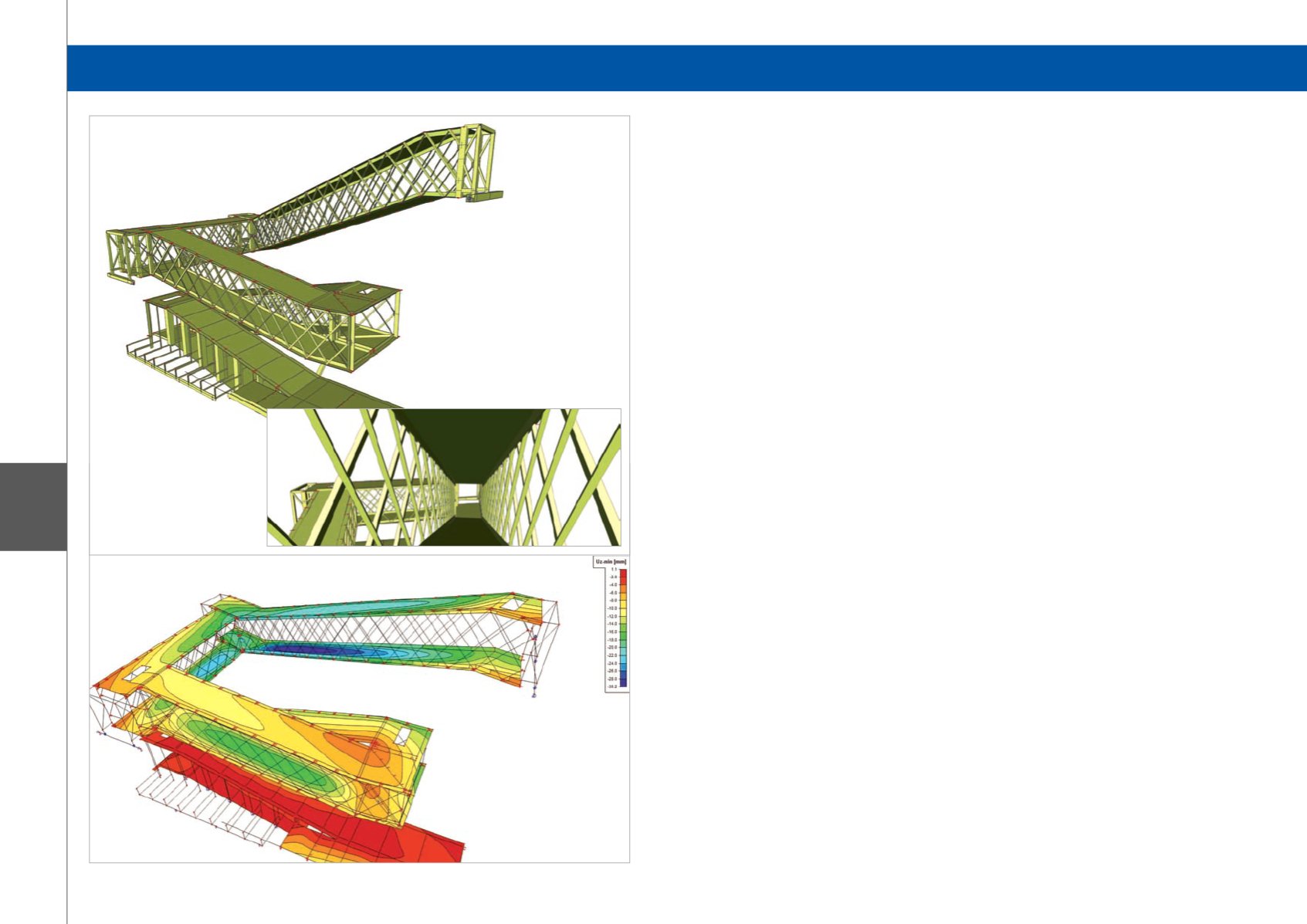
90
X1
Category 1: Buildings
The listed post office, designed by Gaston Eysselinck
in 1953, is being converted into a dynamic cultural
centre. Situated between the old building (1953) and
the new rear edifice, 25 m-long transparent tubes guide
the public into the various rooms in the buildings and
animate the outside space, an amphitheatre beyond
which the tubes are suspended. The tubes allow the
original structure of the building to be as visible as
possible. They are constructed from a single material:
the floor and roof slabs in solid steel plate appear to be
stitched together with a fine steel thread. The solid steel
is also the surface finish so that the tubes look the same
from every side.
By choosing a dense mesh work of diagonal elements,
the thickness of the steel plates and posts could be
reduced to a minimum.
At the points of junction between the diagonals and the
plates, tight Vierendeel cells transfer the transversal
forces of the trusses.
The sewing stitches form oblique elements which,
together with the floor slabs and roof sheeting, form
the horizontal compression and tension components
of a one-storey-high structural frame. The oblique
posts are separated into two crisscross layers and give
the façades a checkered pattern. The posts evolve
from thick square tubes on each layer into thin steel
plates which clearly demonstrate the forces at work
over the length of the posts. When in one layer the
posts are in tension, the cross posts in the other layer
are in compression. The transition from tension to
compression allows the thickness of the stitching, the
steel thread, to vary in the two layers. Through smaller
stitches, the size of the steel posts can be reduced to
form a close-knit pattern that is used architecturally.
At the connections of the tubes to the existing buildings
slide bearings avoid forces created by thermal
expansion, to pass on the existing buildings.
The tubes were compiled as four bridges to one entire
unit. Each tube was prefabricated in a steel atelier and
lifted as one piece over the buildings. Despite the total
weight of 40 tonnes per tube and its manageable sizes,
the assembly had to be done with great precision.
Because of the height of the surrounding buildings and
the small street from where the operation took place,
it was no easy feat. Therefore, the assembly could not
take place with wind speeds of more than 25 km/h.
The added value of Scia in this project was the
possibility to create a global 3D model of the entire
construction. An accurate determination of the section
models resulted in a very precise dimensioning of the
steel elements. We used the steel control function to
check the stability of the posts.
Software: Scia Engineer
Tubes at the ‘De Grote Post’ Cultural Centre - Oostende, Belgium


